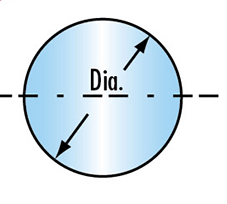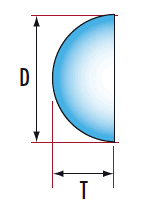It’s a good idea to describe the current power battery recycling market with “precautionsâ€. In the next five years, the large-scale decommissioning of power batteries will be the peak of power battery recycling. How to industrialize the recycling of power batteries is also a difficult point in the industry. "Power lithium battery recycling can not only be limited to a certain enterprise, it must face the entire industry, and promote the recycling work together with upstream and downstream enterprises. At the same time, we must consider the mechanism of power battery recycling." Director of Zhejiang Chaowei Chuangyuan Industrial Co., Ltd. Chang Sunxian said in a speech at the "4th China Renewable Resources Recycling Industry Conference". Related companies actively deploy power battery recycling Since its promotion in 2009, China's electric vehicles have been developed for seven years. With the strong support of the state, the explosion of new energy vehicles has increased in recent years. According to statistics from the China Association of Automobile Manufacturers, the sales volume of new energy vehicles in China reached 2016. 507,000, this year's market sales are expected to be around 800,000. The service life of power batteries is generally 5-8 years, which means that China's power batteries will enter a large-scale retirement period starting this year and next. By 2020, the cumulative scrap of China's automobile power batteries is expected to reach 200,000 tons. Scale, and with the development of new energy vehicles and the passage of time, the pressure of power recovery will become greater and greater. Cao Hongbin, a researcher at the Institute of Process Engineering at the Chinese Academy of Sciences, said that electric vehicle batteries may be scrapped after three to five years of use. After the vehicle battery is decommissioned, if it is not recycled and disposed of, it will not only waste resources but also pollute the environment. The process of reusing power batteries is generally to invalidate, disassemble, detect, and screen used batteries, and then re-use them. "But the power battery of the new energy vehicle is relatively large in volume and high in energy density, and the recycling process is dangerous. Since the power battery involves heavy metals, electrolytes and environmental problems, every step of the recycling and reuse of the power battery is It is important. In addition, because the battery received by the recycling company includes various forms, sizes, specifications, and packaging forms, it is difficult to achieve large-scale mass disassembly and disassembly when the disassembly involves a variety of packaging fixtures. The status quo of large-scale implementation. Yu Hai, general manager of Hunan Bangpu Scrap Automobile Cycle Co., Ltd. said. Although power battery recycling is difficult, the country has already introduced some support policies and layout pilot work. More and more companies have begun to set up the recycling of power batteries. In addition to Shenzhen GEM, Yanfeng Lithium and other professional power battery recycling companies, including BYD, Waterma, Guoxuan Hi-Tech, Ningde era, AVIC Lithium, BAK and other power battery companies, are in the field of power battery recycling The market layout was launched. Urgent regulation of power battery recycling system In the ** phase of the promotion of new energy vehicles from 2008 to 2012, new energy vehicles sold less than 30,000 vehicles, and about 80% were buses. Usually, new energy vehicles will need to face the problem of replacing batteries in about 5 years. For high-frequency vehicles such as taxis and buses, the demand for power exchange may be shortened to three years. The market for new energy vehicles in China has been concentrated in 2015, so the large-scale wave of power exchange is expected to wait until after 2018. "But even if the power battery has not been involved in large-scale decommissioning, the power battery ladder recycling related system must be completed in advance," said Sun Huajun, deputy director of BYD Battery. Because, once the power battery market enters the “decommissioning periodâ€, these batteries will face a “displaced†situation. There are still many problems in the current power battery recycling in China. ** There is no mandatory legal policy. Although the government has already promulgated some policies and regulations, the regulations that actually implement the responsibilities and clarify the penalties are not. Second, the industry is “more scatteredâ€. There are many types of battery products, many production companies, many car companies, and scattered recycling companies. These problems are not conducive to the centralized recycling of power batteries; Third, the channel is difficult and the market is not mature. Although the problem of power battery recycling is an urgent task, but because China's power battery has begun to enter the peak of recycling, so the previous market is not mature, SME supply channels become a problem. “In addition, the cost and profitability issue is undoubtedly the main obstacle to battery recycling. The high cost of recycling process and low recycling value make many companies and capitals prohibitive, and the prices of cathode materials such as anode, lithium manganate and lithium iron phosphate are biased. Low, without the economic driving force of recycling, it is difficult to guarantee the recovery rate of power batteries and resources and environmental protection," said Zhang Tongzhu, senior engineer of the Automotive Standardization Research Institute of China Automotive Technology and Research Center. He believes that the formation of scale effect is an important breakthrough point for the current power battery recycling. It is urgent to establish a power battery recycling system and industry alliance. For the industry, it is conducive to the formation of economies of scale, more concentrated and effective recycling. Conducive to the overall development of the industry as well as resources and environmental protection. For the battery and the vehicle enterprise, it can solve the problem of recycling the battery itself, and does not need to establish an additional recycling mechanism to increase the operating cost of the enterprise.
N-BK7 Ball Lenses are glass spheres commonly used in fiber optic applications, ball lenses are ideal for focusing light into optical fibers, or for fiber coupling. Fused Silica features high transmission from 200nm to 2.2μm with a low coefficient of thermal expansion, making it ideal for the most demanding ball lens applications in the ultraviolet, visible, and near infrared spectra.
Ball lenses are commonly used for improving signal coupling between fibers, emitters, and detectors, as well as objective lenses in endoscopy and bar-code scanning applications. Half-ball lenses simplify handling and integration.
Ball Lens Half-Ball Lens
Specification of our ball lens:

*Material:BK7 or other optical glasses,optical crystal materials
*Diameter:1mm - 40mm
*Dimension Tolerance:+/-0.005mm
*Surface Quality:40-20
*Sphericity:0.005mm
*Coating:optional
Schott Bk7 Ball Lens,Bk7 Ball Lenses,Schott N-Bk7 Glass Ball Lens,Schott Bk7 Half Ball Lens
China Star Optics Technology Co.,Ltd. , https://www.csoptlens.com